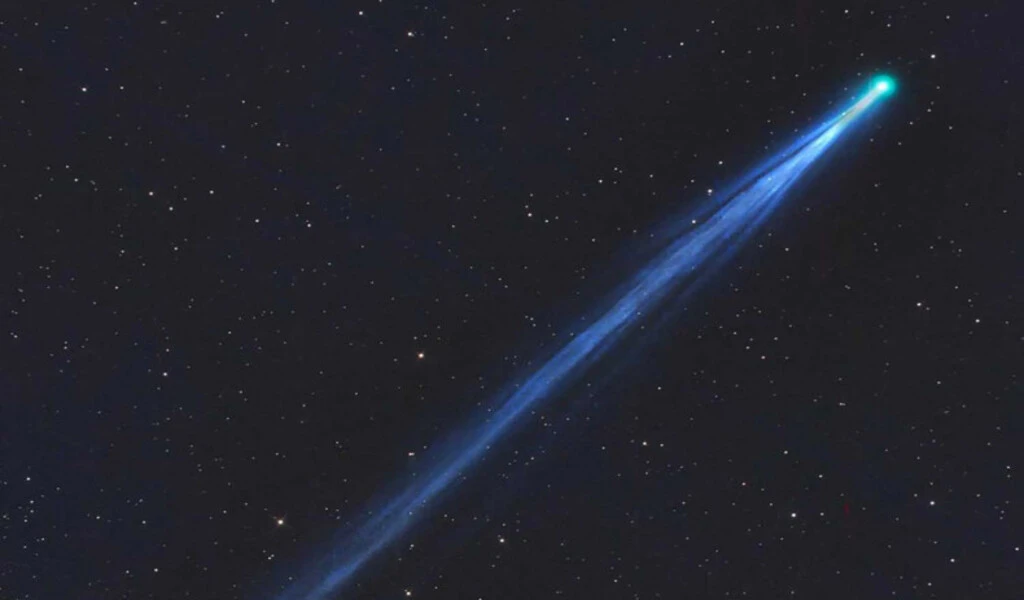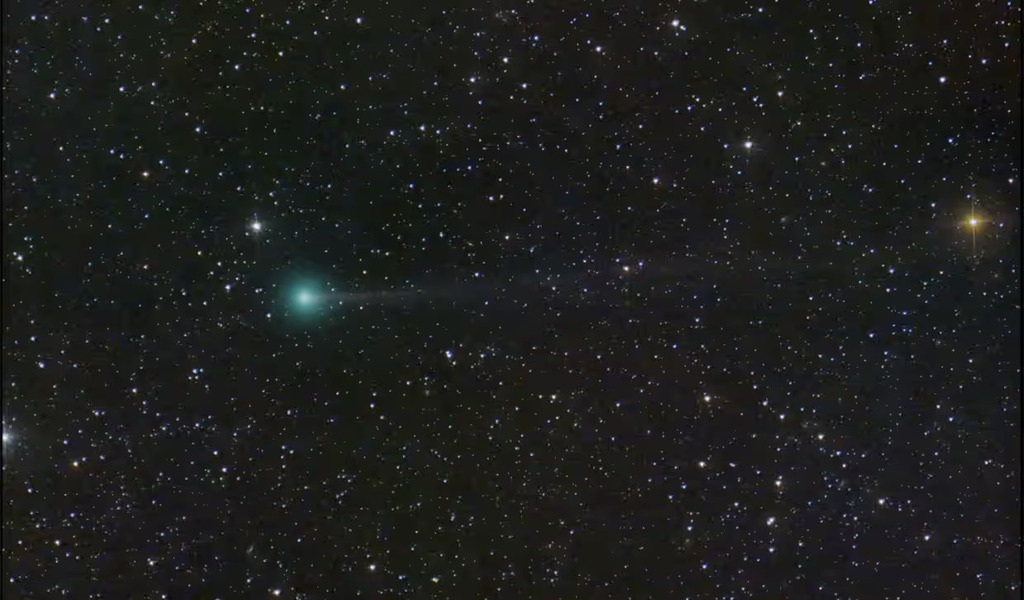News
Thailand Set To Witness Celestial Spectacle: Nishimura Comet Approaching The Sun This Weekend

(CTN NEWS) – Prepare to turn your gaze toward the heavens this upcoming weekend, as a captivating celestial phenomenon is poised to grace the skies of Thailand.
The National Astronomical Research Institute of Thailand (Narit) has unveiled an exciting revelation: the recently discovered Nishimura comet may make its presence known to the country’s residents on Sunday evening as it embarks on its journey toward the sun.
This comet, officially designated as C/2023 P1, pays homage to the Japanese amateur astronomer Hideo Nishimura.
Following an orbital trajectory spanning an impressive 437 years around our planet, the Nishimura comet, composed of a delicate blend of dust and ice, is forecasted by Narit to approach within a striking proximity of 125 million kilometers from Earth on the upcoming Tuesday.
Nevertheless, Narit cautions that locating the comet during the initial attempt may prove somewhat challenging due to its oblique angle concerning Earth and the sun.
Fret not, for as early as Friday, the elusive Nishimura comet should grace the western sky after twilight descends, becoming increasingly visible by Sunday as it draws closer to a distance of 34 million kilometers from the sun.
Comet Nishimura’s Luminosity and Observational Opportunities
According to the Comet Observation database, the comet’s luminosity is expected to peak at magnitude 3, rendering it observable without the need for any advanced technological aids.
Narit further elucidates that Sunday evening presents an ideal opportunity for sky gazers in Thailand to observe the Virgo constellation, as this is the most probable location for the comet’s appearance.
However, this window of opportunity may be relatively brief, lasting approximately an hour before the comet starts to fade.
Narit also provides a helpful tip for observers in their quest to pinpoint the comet: be on the lookout for its distinct greenish hue and its elongated tail, both distinctive characteristics of the Nishimura comet.
The maiden sighting of this celestial object was reported by amateur astronomer Nishimura on the morning of August 11 while capturing long-exposure snapshots of the night sky with a digital camera.
Subsequently, these findings received validation from the Minor Planet Centre on August 15.
This latest discovery adds a third celestial gem to Nishimura’s list of accomplishments, joining the ranks of Comet Nakamura-Nishimura-Machholz (C/1994 N1) and Comet Nishimura (C/2021 O1).
Interestingly, another emerald-hued comet, officially referred to as C/2022 E3 (ZTF), made a brief appearance in the night sky around the beginning of February, marking its first sighting in approximately 50,000 years.
Astronomers initially detected C/2022 E3 (ZTF) from California’s Palomar Observatory in March 2022.
For those enthusiasts eager to catch a glimpse of Comet Nishimura, be sure to mark these significant celestial dates on your calendar:
- September 8: Just prior to sunrise, the comet will make its appearance near the Leo constellation, nestled closely to Regulus, at an angle of approximately 20 degrees from our radiant sun. This affords a precious one-hour window for observation. According to the latest data, the comet will exhibit an apparent magnitude of 5.2, making it visible to the naked eye in areas with minimal light pollution.
- September 12: This marks the day when the comet will come closest to Earth, an exhilarating moment in its celestial odyssey. At an astonishingly close distance of 125 million kilometers, it will reach its closest point, although its nearness to the Sun may present some observational challenges.
- September 17: A grand celestial finale awaits stargazers as the Nishimura Comet gleams brilliantly in the western evening sky. Positioned at an angular separation of roughly 10 degrees from the Sun, it will adorn the Virgo constellation. Skywatchers will have nearly an hour for observation before it gracefully retreats toward the horizon, vanishing from view. From this juncture onward, the comet will gradually move away from both Earth and the Sun, eventually fading into obscurity, only to reappear in over four centuries.
RELATED CTN NEWS:
Trump’s Legal Team Requests Recusal Of U.S. Judge In Capitol Riot Case, Citing Bias Concerns
FDA Approves Updated COVID-19 Vaccines To Address Variants: Key Information And Recommendations
Sexual Misconduct: Female NHS Surgeons Report Colleague Sexual Assault In Past Five Year






























